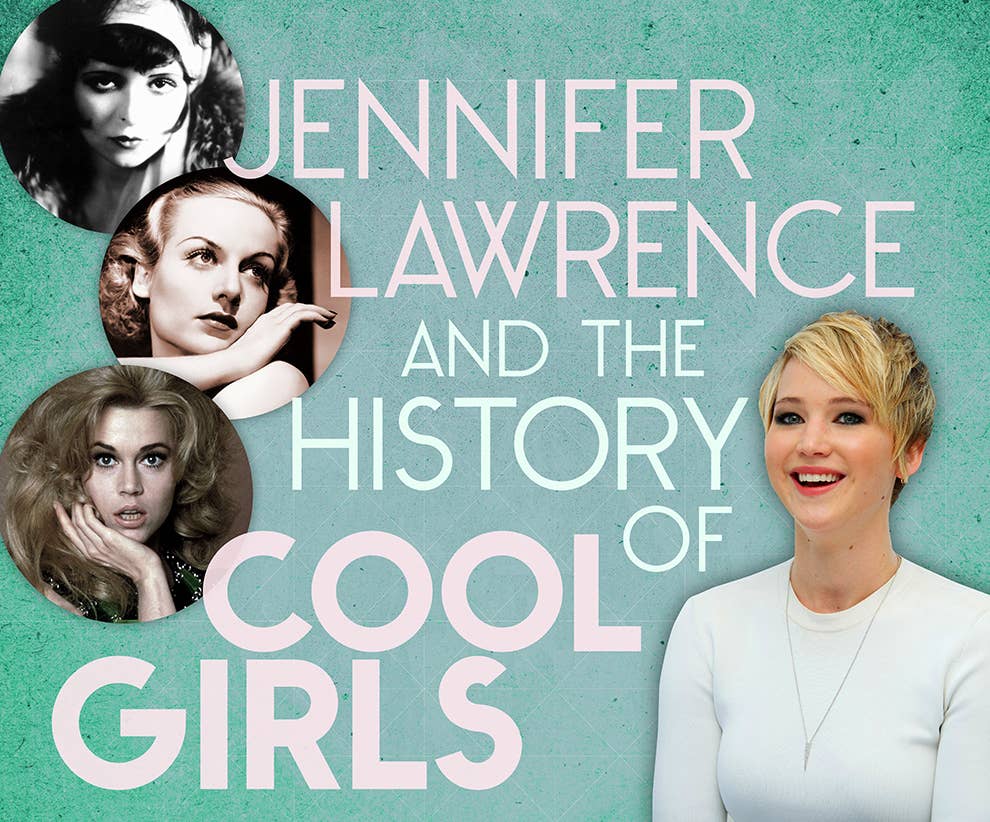
What’s your favorite Jennifer Lawrence moment? When she tripped on the way to accept her Academy Award, or when the paparazzi snapped photos of her drinking Veuve Cliquot straight out of the bottle? Or maybe it was the ease with which she regaled Conan O'Brien with a tale of butt plugs, or the Vine of her spilling mints in the middle of press conference? My personal moment happened backstage at the Oscars, when, with the help of a mildly lecherous Jack Nicholson, she turned the normally banal post-win interview into a master class in charm. He sneaks up on her, she freaks and fangirls out, they do some weird flirting, and when Nicholson leaves, Lawrence just loses it: “OH MY GOD,” she gasps, her face in her hands.
But is Jennifer Lawrence really just like us? She has a stunningly beautiful face and an equally fantastic body. She’s now nominated for her third Academy Award, and she’s also the star of the highest-grossing movie of the year. She’s award-collecting director David O. Russell’s favorite new muse. She’s operating on another level.
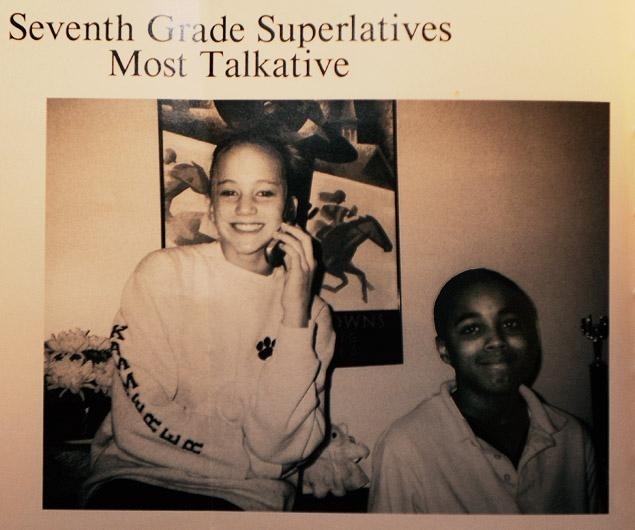
And it’s an image that keeps amplifying: She may have shed her tomboy pastimes, but she still loves fries, pizza, and Doritos — which she recently confessed to getting all over her American Hustle costumes. She talks about food, and her voracious appetite, constantly. She photobombs like a boss. She hates exercising and promises to punch anyone who says “I like exercising” in the face. Girls love her, guys desire her. I love J.Law, you love J.Law, everybody loves J.Law.
But, no, she’s not like us. She’s like a perfect character out of a book. Specifically, a book by Gillian Flynn called Gone Girl (currently being developed into a David Fincher movie), in which a main character describes a very particular yet familiar archetype:
“Men always say that as the defining compliment, don’t they? She’s a cool girl. Being the Cool Girl means I am a hot, brilliant, funny woman who adores football, poker, dirty jokes, and burping, who plays video games, drinks cheap beer, loves threesomes and anal sex, and jams hot dogs and hamburgers into her mouth like she’s hosting the world’s biggest culinary gang bang while somehow maintaining a size 2, because Cool Girls are above all hot. Hot and understanding. Cool Girls never get angry; they only smile in a chagrined, loving manner and let their men do whatever they want. Go ahead, shit on me, I don’t mind, I’m the Cool Girl.”
The Cool Girl has many variations: She can have tattoos, she can be into comics, she might be really into climbing or pickling vegetables. She’s always down to party, or do something spontaneous like drive all night to go to a secret concert. Her body, skin, face, and hair all look effortless and natural — the Cool Girl doesn’t even know what an elliptical machine would look like — and wears a uniform of jeans and tank tops, because trying hard isn’t Cool. The Cool Girl has a super-sexy ponytail.
Cool Girls don’t have the hang-ups of normal girls: They don’t get bogged down by the patriarchy, or worrying about their weight. They’re basically dudes masquerading in beautiful women’s bodies, reaping the privileges of both. But let’s be clear: It’s a performance. It might not be a conscious one, but it’s the way our society implicitly instructs young women on how to be awesome: Be chill and don’t be a downer, act like a dude but look like a supermodel.
You probably know someone playing a Cool Girl in real life, and you probably resent her — unless you’re a straight dude, in which case you probably think she’s great. But Lawrence performs Cool Girlness with such skill, such seamlessness, that it doesn’t seem like a performance at all. I’m not suggesting that Lawrence is intentionally inauthentic, scheming, or manipulative: Rather, like all the Cool Girls you know, she’s subconsciously figured out what makes people like her, and she’s using it. But is this persona truly “cool,” or is it a reflection of society’s unreasonable and contradictory expectations of women?
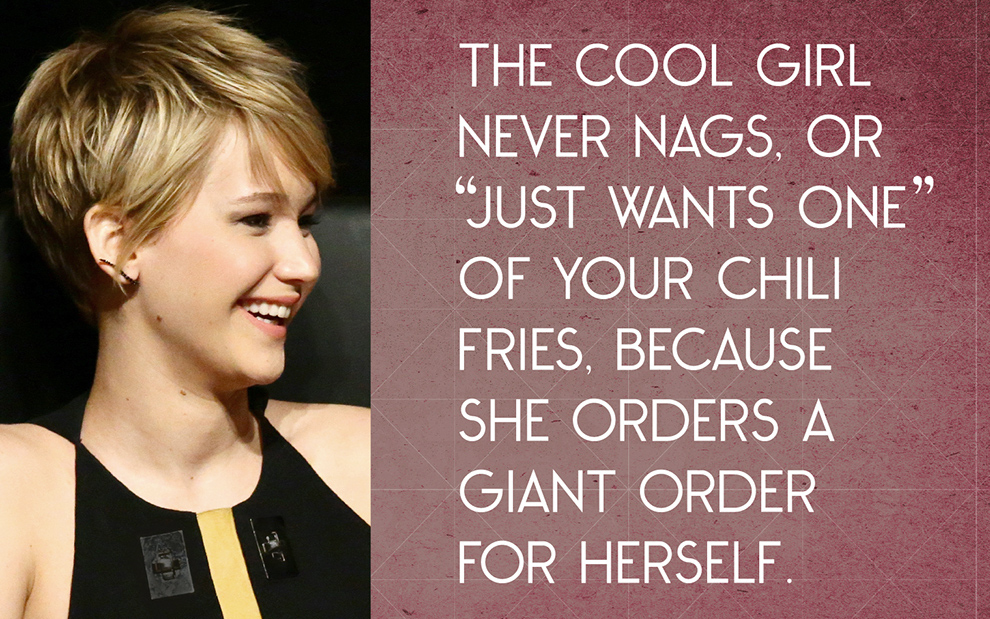
Jennifer Lawrence is by no means the first nationally visible Cool Girl. Olivia Munn, Olivia Wilde, and Mila Kunis are recent also-rans, but the Cool Girl has a genealogy that traces all the way back to silent Hollywood. Famous Cool Girls are women who became stars during periods of societal anxiety over increasing freedoms for women, and as people quietly wondered whether women, once emancipated, would become homely, castrating bitches. Cool Girls have been proof positive that a woman could be liberated and progressive and yet pleasing to men, both in appearance and in action.
Yet the Cool Girl’s cool is ephemeral. We’ve been anticipating the J.Law backlash for months, but if and when it comes, it’ll have less to do with Lawrence and more to do with the need for a new articulation of the Cool Girl to keep the myth alive. This is an anxiety that needs constant soothing, and one star can provide only so much reassurance. One minute you’re cool, perfectly balancing the progressive and the regressive, but when that balance falters, you’re too much, too sexual, too loud, too performative, and the cultural backlash sweeps you under.

Clara Bow never stopped moving. On screen, in interviews, running from one date to the next, even standing, she was like toddler constantly rocking back from heel to toe. She had short, flaming red hair, a thick Brooklyn accent, and horrible manners; instead of dining with the stodgy Hollywood elite, she spent her weekends hanging out at the USC football games, flirting with the players, including a young, pre-stardom John Wayne. Over the course of the ‘20s, Bow became the flapper par excellence: In films like Dancing Mothers, she drank and danced the Charleston and rode in cars with boys; in It, she became the biggest star in the world — and the first Cool Girl.
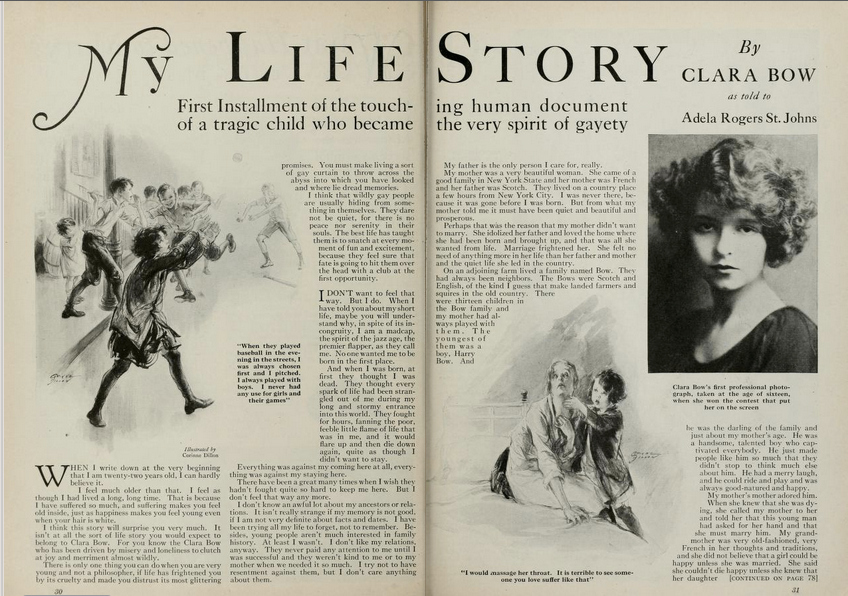
But it didn’t matter how much Bow dismissed clothes, or makeup, or other girls. She had the one thing that a girl really needs to succeed: a stunning face. And it was that face, entered into a magazine contest, that earned Bow her chance at stardom. At first, she struggled to find roles — her face was round and innocent, but her eyes gave off something wild and electric. She couldn’t play the slinky, vampish roles then dominated by Gloria Swanson, but neither was she a Mary Pickford-esque good girl. Where Swanson was angular, Bow was round; where Swanson moved languidly, Bow ricocheted across the room.
Bow didn’t fit the Hollywood mold — but then, over the course of three manic years, she transformed the mode entirely. The vamp and the good girl were out; the flapper, of which Bow was labeled the most vibrant example, was in. Everyone knows the flapper stereotype: endlessly dancing the Charleston, with drop-waisted, heavily fringed dresses and finger curls. But that’s just the Halloween costume version of the flapper. Flappers were, in truth, an amplified version of the “New Woman” — a type that F. Scott Fitzgerald famously described as “lovely, expensive, and about 19.” After the first World War, the continued spread of modernity, combined with growing rights for women, made it possible for more and more young, single women to move to cities, where they lived with other women, went to movies, road streetcars, and used their wages to buy things, especially clothes.
By the mid-‘20s, the cities were filled with millions of these New Women, and the most visible and vibrant ones, including Bow herself, became the flappers of the public imagination. Bow rarely wore the fringed dresses we associate with the type; instead, she wore a cloche-style hat over her unruly, flaming red hair, along with drop-waisted gauzy shifts and a noted lack of bra. But Bow was no waif: She had luscious, perky breasts; the effect when she bounced across, however, wasn’t obscene so much as joyful.
On screen, Bow’s characters reveled in everything: walking, dancing, drinking, flirting, even just being in their own bodies. There’s a perfect scene from Dancing Mothers when Bow fights her way into a suitor’s apartment, grabs the cocktail shaker from the butler, and takes a huge drink, and shivers with delight as the alcohol makes its way through her body.
See the way everything about her feels like a wink? How natural and easy life seems to her? Textbook Cool Girl. Clara Bow wasn’t just hot: She was fun. She never nagged, or stayed home watching rom-coms; she never complained, or was scared or shy. She had loads of “It” — a word that came, in the late ‘20s, to stand in for sex appeal. But It was more than just sexiness. As defined by Photoplay, It was a “sort of invisible aura that surrounds your being and bathes you in its effulgence” — and anyone with It is “always utterly un-self-conscious and perfectly indifferent and unaware of anyone’s interest in her. The moment self-consciousness enters into the affair, ‘It’ departs.”
Bow acknowledged that the It quality attributed to her came from her “fearlessness”: “Perhaps I’m just a regular girl, a tomgirl, one that doesn’t think of men much, maybe it’s my indifference to them.” And therein lies the crux of the Cool Girl, adapted from One Direction: She doesn’t care if she’s beautiful; that’s what makes her beautiful.
Bow’s nonchalance was by no means limited to the screen. She showed up for interviews in outfits thrown together from her closet (in 1927: “a white flannel sport outfit — no sleeves, very short” with “white kid sandals, no hose, and a jaunty little blazer cap”), she loved to gamble, and she plowed through men. Gary Cooper, director Victor Fleming, Gilbert Roland, Yale student Robert Savage — she was engaged (and quickly unengaged) to them all once she grew tired of making out with them. She was a man-eater, but it wasn’t on purpose: She just loved hanging out with men, and “engagements” were the easiest way to do so.
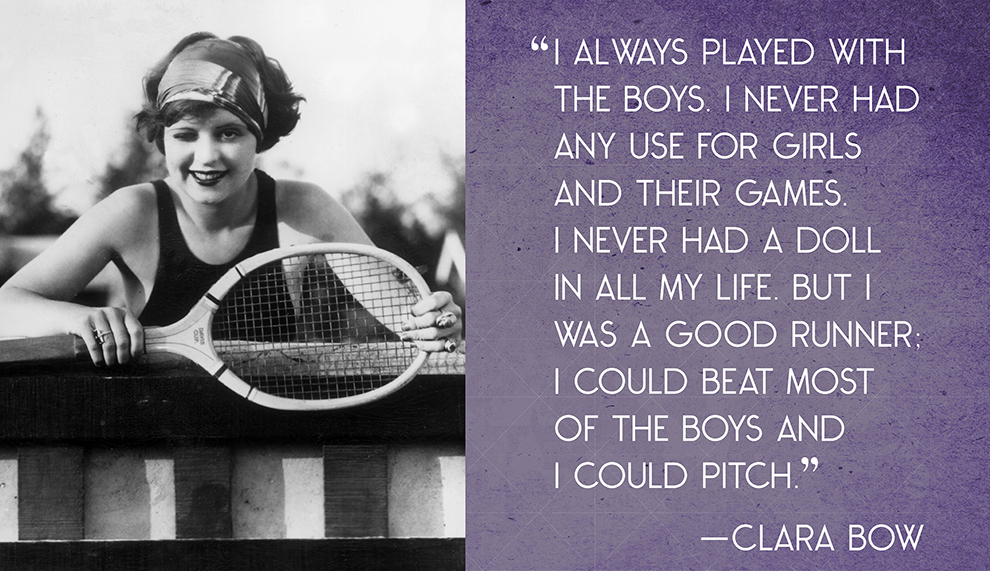
And for a while, Bow’s strategy worked perfectly. At the height of her popularity, she received 45,000 fan letters a week — and her trademark “bee-stung” lips and red hair were emulated en masse, sending sales of henna through the roof. But by 1930, the public began to grow weary with her. She found herself “engaged” to yet another man, but instead of celebrating the new dalliance, the press ridiculed it. When the still-engaged Bow was caught in Dallas flirting with her very married doctor — all while exchanging sexy telegrams with actor Rex Bell — she didn’t seem like a Cool Girl so much as a caricature of one. She began amassing giant gambling debts, claiming not to have noticed the difference between $14,000 and $1,400, and the gossip columnists began to tease her openly about her weight gain.
But things were about to get much worse: In the fall of 1930, Bow discovered her former hairdresser and current confidant Daisy DeVoe had been skimming her accounts. Bow fired her immediately and filed charges against her, but before the case went to trial, DeVoe took her revenge, selling “secrets” of Bow’s private life to a local tabloid. The “secrets” were total bombast — Bow slept with dogs; Bow slept with the entire USC football team; Bow had every strain of VD — and everyone knew the paper was trash. But they stuck: Bow was, after all, a confident, shameless girl; who’s to say she wouldn’t have behaved that way?
And so the patina of Cool Girl left Bow behind. After a humiliating trial that damaged Bow more than DeVoe, she retreated to the desert with new husband Rex Bell. An attempted comeback, making light of the allegations against her, fell flat. In the depths of the Depression, the flapper — and, by extension, Bow — wasn’t a Cool Girl, or an It Girl, but a tired, forgotten woman who quickly receded in the public imagination. Today, the biggest star of the late ‘20s is remembered mostly via Kenneth Anger’s Hollywood Babylon, which reproduced the most salacious of the tabloid rumors about her. But for a handful of years in the late ‘20s, Bow was the bee’s knees.

As Bow was receding from Cool Girl light, another star was gearing up, however slowly, to take her place. Carole Lombard would become one of the definitive screwball heroines of her time, best known for her manic turn in My Man Godfrey and for becoming the love of Clark Gable’s life. Screwball heroines are, in truth, just variations on the Cool Girl, generally distinguished by their ability to keep pace (verbally, mentally, slapstickally) with the boys. They might wear fine clothes, but they’re never shown primping or mooning; like all Cool Girls, they’re effortlessly beautiful, but that beauty is matched by either wit or charm.
Like Bow, Lombard started out as a tomboy: She was playing baseball in the streets when a scout singled her out and cast her in A Perfect Crime. She spent some time as a Mack Sennett Bathing Beauty, and with her marriage to the dashing William Powell, she became the focus of fan magazine gossip. But her image was flat: In publicity shots, she was always frowning, and had a bored look that seemed to communicate over it.
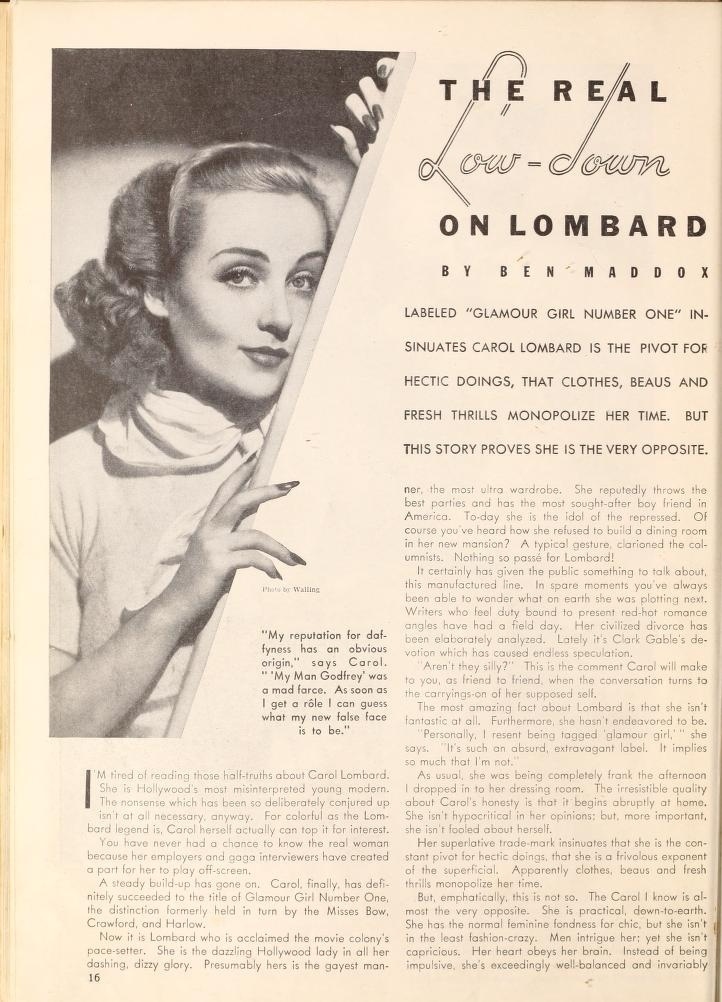
Over the next four years, Lombard’s image morphed more and more into that of the Cool Girl. She told Motion Picture that girls had two choices: Be modern (drive, play bridge, read, keep up with the latest plays, go in for sports with zest) or be a wallflower. She shit-talked snobbery in all its forms, declaring, “I can’t STAND affected people.” She was an excellent shot, and her house overflowed with animals, including dove, ducks, dogs, and a Bantam rooster. She regularly answered the phone with crazy accents, and refused to keep a standard dinner hour. As a fan magazine article on the “Lombard Asylum” made clear, she drove everyone around her bonkers — and they absolutely loved her.
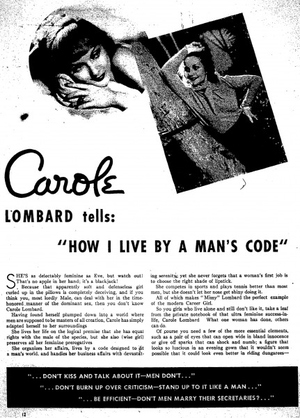
Lombard’s coolness was further ratified by her pairing with Clark Gable: Hollywood’s leading star and ultimate cad. The two had first met while co-starring in No Man of Her Own in 1932, but Lombard reportedly found Gable intolerable. When they met again at a friend’s “nervous breakdown”-themed party, Lombard arrived by ambulance, carried into the party on a stretcher — much to Gable’s delight.
Gable was technically married to his second wife, from whom he’d been separated for some time. But the Hollywood press loved a star romance and, with the help of Gable’s studio, crafted a series of narratives that helped make the romance look like destiny. Gable was a man’s man; he loved being dirty, being in the woods, doing man things. His first wife had been 20 years his senior; his second wife was a drag. But Lombard! She was a Cool Girl, and she was ready to go hang out at hunt camp with Gable.
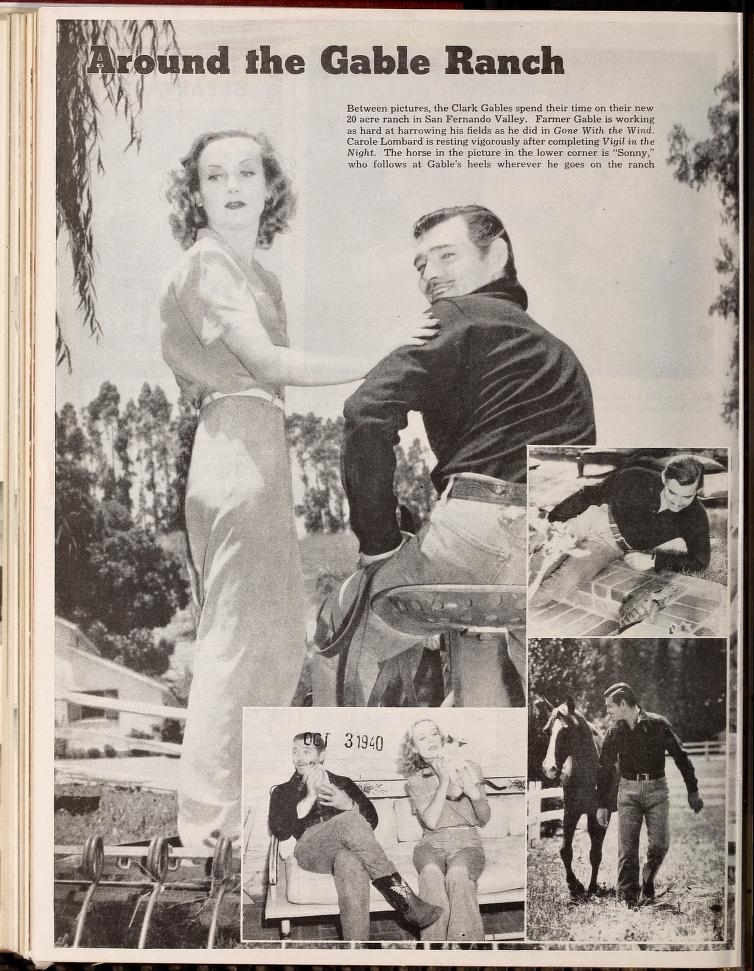
But Lombard was no stage-nine clinger: No Cool Girl chases a dude. While all this was going down, she was negotiating a choice contract with Paramount, with even better terms than Gable’s. With choice of director, co-stars, and ultimate control over her publicity. It was an unprecedented deal, for a man or a woman — and highlighted just how un-passive she was, even if she was coupled with the uber-masculine Gable. When Lombard and Gable married in 1940, Lombard didn’t become his subject so much as his equal: They were constantly playing jokes on one another (Gable’s birthday cake to Lombard: "TO MAMMY ON HER 75TH BIRTHDAY"), and she hung out in the mud with him at hunting camp among the dudes, bagging her limit every day. As Motion Picture explained, “Carole is a man’s girl. Clark is a man’s man.”
Precisely. In short order, Gable and Lombard’s marriage became the envy of Hollywood — the Cool Girl meets her match, and they live happily ever after. But with the start of World War II, all Hollywood stars, male and female alike, were called upon to do their patriotic duty: appearing in training films and, most importantly, touring the nation selling war bonds. Which is precisely what Lombard was doing in her home state of Indiana when, on her way home, her plane crashed into the Sierra Nevadas, killing all on board. It was a national tragedy, and Lombard was broadly considered one of the first victims of the American war effort.
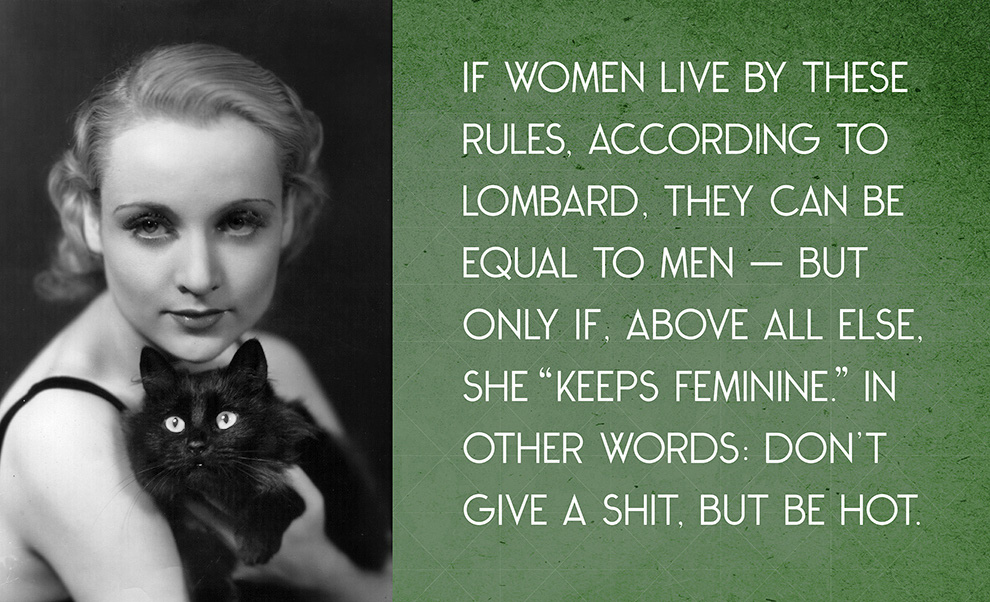
Lombard’s tragic death also preserved her in Cool perpetuity: She never grew old, or un-hot; the public never grew annoyed of stories of her knee-deep in the muck, and their marriage never had the chance to publicly fall apart. But Lombard’s Cool Girl was specific to the pre-war, Depression era: Her brand of fun was not only distinctly DIY, but focused on reaffirming the masculinity of the men around her. She had power, but that didn’t mean men didn’t — a crucial thought amid the thoroughly emasculating era of widespread joblessness, when many men’s sole understanding of themselves was unmoored.
It’s impossible to know how Lombard would’ve adapted her image to the changing times, and how her audience would’ve responded. What we do know, however, is that she died before the world had time to grow weary with her — which is, in no small part, why she lives on as a paragon of Cool Girlness, equal parts gorgeous and chill, effervescent and effortlessly sexual.
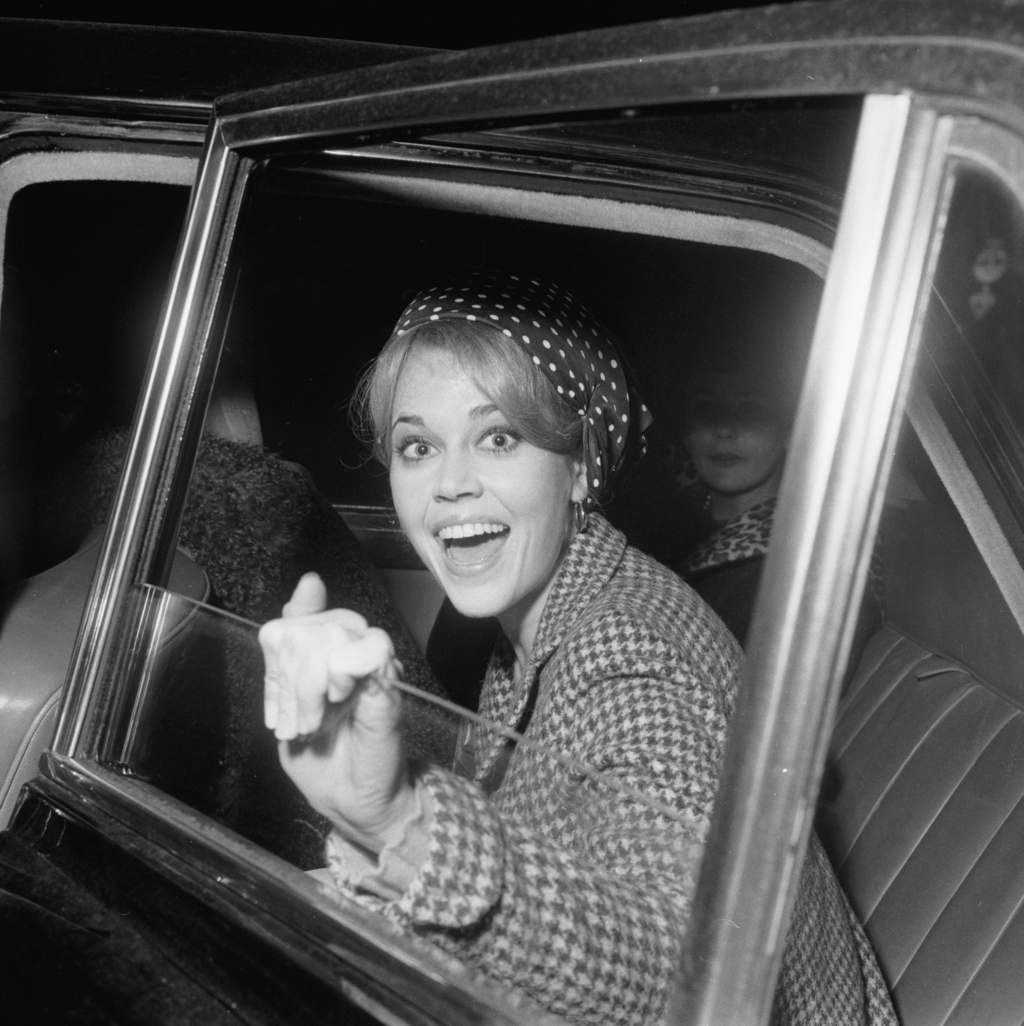
Your reaction to the name “Jane Fonda” depends wholly on your age: under 20, and she’s the lady from Monster-in-Law; under 35, and she’s the hero of your mom’s aerobics videos; under 55, she’s Hanoi Jane, the woman your dad cussed about at the dining room table; under 80 (and of a certain disposition), and she’s the progressive feminist gone rogue, the embodiment of all that plagued the New Left and the hard turn to the right that followed. But before Fonda was any of these things, she was the coolest thing the ‘60s had seen — a mix of fresh-faced Americana and potent sex appeal.
To understand young Jane Fonda, you have to understand what her father meant to mid-century America. Henry Fonda’s image was inflected with honesty, frankness, and indelible American work ethic; Jimmy Stewart was her godfather. As a teen, Fonda went to the best private schools, eventually spending two years at Vassar, but that’s when her all-American image began to crumple: When she realized she was wasting her father’s money and her friends were all waiting around getting MRS degrees, she took off for Paris, where she thought she’d become something like an bohemian artist.
So far, so cool: Cool Girls either have endless supplies of social capital or endless means of appropriating it. But as Fonda later explained, she was a crap painter, and returned back to the states in the late ‘50s, where she found her way to the Actor’s Studio and tried to connect to the electricity pulsing through Brando, Newman, and others espousing the Method.
While building her technique, Fonda took some modeling gigs — looking very fresh-faced on the cover of Vogue — and eventually landed a role as a cheerleader in Tall Story, a B-picture produced by her second godfather, Josh Logan. The role was pure cheesecake, but it put Fonda on the map: One review declared she had “a smile like her father’s and legs like a chorus girl.” From the beginning, however, Fonda was positioned as something a bit different: unlike a Hollywood glamour girl, Fonda was “surprisingly frank,” and refused most makeup, especially lipstick. In interviews, Fonda emphasized her lack of self-confidence: She was skinny before skinny was cool; small-breasted when Marilyn Monroe was the ideal.
Which was probably why it took Fonda so long to break through — that and her refusal to rely, at least wholly, on her father’s connections. Throughout the early ‘60s, she took a string of B-role parts, none remarkable. But she kept talking to the press: In 1961, she most famously asserted that “marriage is the bunk!” At this point, Fonda began to become something more than the sum of her privileged parts: She wasn’t following the Hollywood script. She told the Boston Globe that Vassar was a “one-idea school,” declaring, “If there’s one thing I’d hate to become, it’s a suburban housewife. I’ve never seen one who wasn’t so exhausted by her husband and kids she wasn’t ready to kill herself” — a startling sentiment when Hollywood’s leading female stars were Doris Day and Debbie Reynolds.
She got away with it, even without a hit movie, for two reasons: her father and her beauty. As one interviewer remarked, “Jane Fonda looks exactly like her father. Same clear look. Same boyish shoulders and long legs. Every now and then I had the upsetting feeling I was admiring Henry Fonda’s ankles.” Her beauty was natural. She always wanted to be a boy, and felt most comfortable around them. She was confident in herself and dismissive of those who weren’t.
In 1964, Fonda was fed up with her American parts, and sought out the French director Roger Vadim, best known for his marriage to French star Brigitte Bardot, whom he directed in …And God Created Women and transformed into an international sexpot. He’d also had a public affair with Catherine Deneuve, fathering a child yet never marrying. Along with Godard and Truffaut, Vadim was the embodiment of the French New Wave — the ultimate in cool.
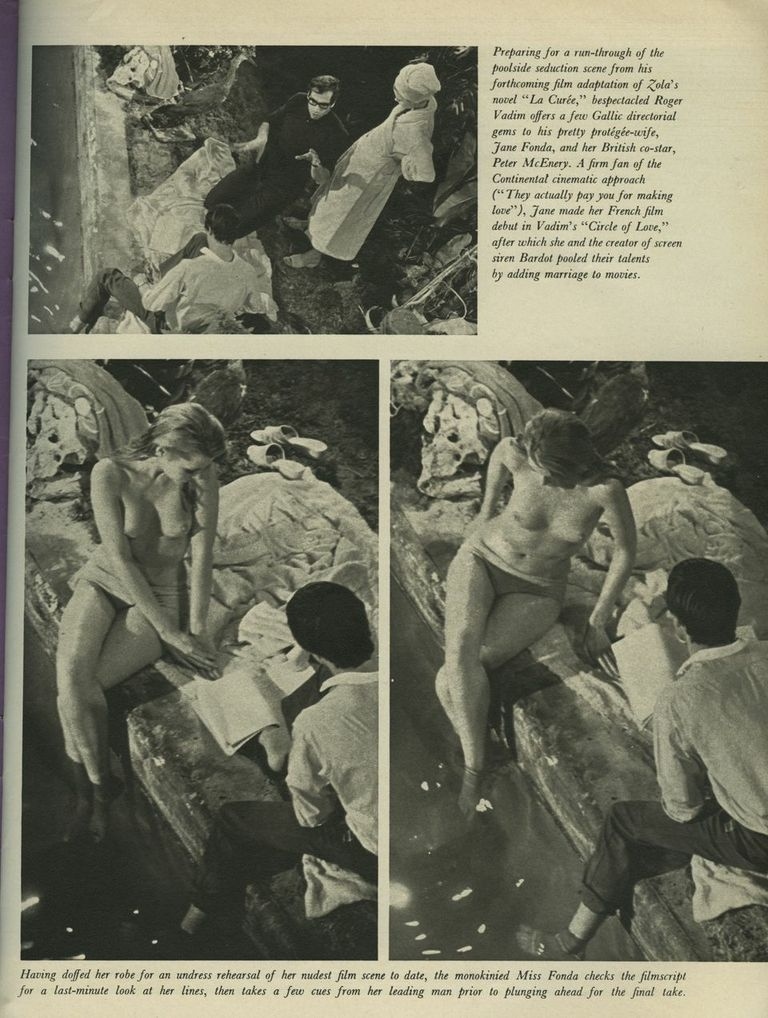
As Vadim explained, he was helping Fonda be “more herself.” Unlike other Hollywood actresses, she could “let herself go: it’s the difference between Doris Day and Marilyn Monroe.” And the nudity wasn’t slutty: “There’s nothing wrong with nudity if it’s tastefully done,” she told the Chicago Tribune. When Newsweek ran a story about “The Permissive Society” in 1967, they put a picture of Fonda, naked from behind, on its cover.

But is nudity tantamount to cool? Not exactly. What made Fonda “cool,” then, was the honesty with which she talked about the nude scenes; with the same sort of frankness that she discussed her years in therapy, she admitted that she often had to take “a couple of drinks and some tranquilizers” to relax enough to get naked. She might look like Bardot, but beneath it all, she was still a bit of a bashful American girl.
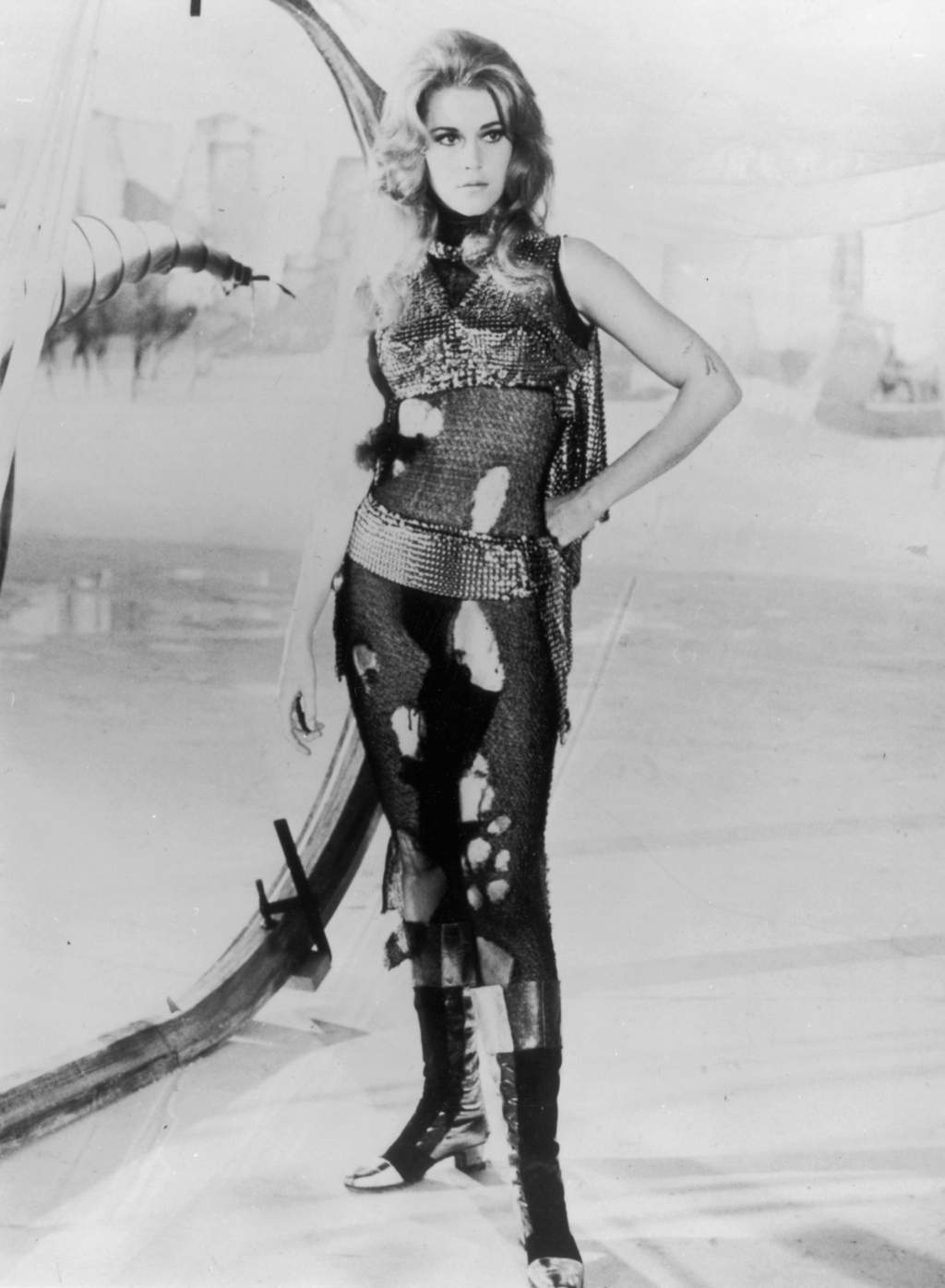
Was Fonda in on the joke? Was it a joke? That was the tension that made her cool. But over the next two years, the casual, self-mocking tone, the very heart of the Cool Girl, began to fade. She’d still make frank comments like “Sure, I’ve taken pot. But I prefer a good drink,” though she was also vowing that she’d never feed her newly born daughter anything out of a can. She was “an exponent of bralessness” and called all foundation garments “stupid harnesses,” but she was talking a bit too much about how she got all of her clothes at local flea markets. Very gradually, the Cool Girl-ness seemed less like her authentic self and more like a very serious and high-minded performance.
Take the example of They Shoot Horses, Don’t They, in which Fonda played a disillusioned Depression-era girl who enters a dance marathon in hopes of winning the grand prize. It’s an amazing performance, but the film’s premise — and its devastating ending — lack the whimsy, tinged with ridiculous, that made her early image fascinating.
Fonda was nominated for an Oscar, but this wasn’t like Lawrence’s nominations or the swirl of winning sound bites that accompanied them. Because weeks before the ceremony even took place, Fonda’s image took a drastic turn to the left. On March 8, 1970, she was arrested with a group of Native Americans trying to occupy Fort Lewis outside of Seattle; from there, she began a whirlwind tour of college campuses, speaking out against the United States involvement in Vietnam. At University of Maryland, she declared that “the army builds a tolerance for violence, and also a tolerance for losing one’s constitutional rights. I find that intolerable,” and she was banned for life from Fort Meade for seeking antiwar support from current GIs. When asked whether he and Fonda would be seeking divorce, Vadim responded, “At the moment, Jane’s making a revolution and I’m minding the baby.”

Over the course of the next year, Fonda’s politics only became more pronounced. She allowed the Black Panthers to use her New York condo as a meeting place; she announced plans to launch an investigation of Vietnam war crimes; she was arrested on drug smuggling charges in Cleveland. The “drugs” were vitamins, but the arrest highlighted just how much of a menace Fonda had become to the American government. She sold her home and her wardrobe; she fasted in Colorado and declared herself “a revolutionary.” She only stopped protesting long enough to play a call girl in the feminist masterpiece Klute, earning her second Best Actress nomination in three years. The va-va-voom hair had already been shorn in 1968 for They Shoot Horses, but now Fonda sported a distinctive shag — what we’d call a mullet — maintained, according to reports, by a male barber. She wore a shapeless military coat and pantsuits; she traveled to Vietnam to experience firsthand what the men of her generation were experiencing, eventually earning her the moniker of “Hanoi Jane.”
The Cool Girl had gone rogue, and the world soured on her accordingly. Fonda had embraced sex, sure, but she’d always been a tomboy. In the early ‘60s, the outspokenness and rejection of norms of femininity had made her seem a bit madcap and awesome; taken to its natural extension, she became an unruly, un-American woman — and most certainly not “cool.” Between 1971 and 1977, every film she touched flopped, and she gradually became the signifier for the misguided and ultimately impotent aims of the New Left. Her image would only be rehabilitated in the 1980s with a hard swing to the right, a marriage to one of the least cool capitalists, and an embrace of aerobics. The Cool Girl, then, turned Soccer Mom.
We’d like to think of “cool” as connotative of something progressive, even radical. But Cool Girls are neither, at least not precisely. We love them because they seem to offer an alternative to the polished, performative femininity visible in both our stars and our peers. Because they “don’t give a shit”; because they don’t truck with the regulations and rules of dating and mean-girling that prove so infuriating. But to be “cool” is to tread a fine line between something different, something almost masculine, but never anything too masculine, or assertive, or independent. The Cool Girl can talk about poop, and video games, and eating Doritos, because those things are ultimately benign: Even with her short hair, Jennifer Lawrence still has the body and the face and the wardrobe that conforms to dominant beauty ideals.
We say we want to be Jennifer Lawrence’s BFF, but what does that mean? Like Bow, and Lombard, and early Fonda, she’d be so incredibly fun. But would she challenge us to think differently about ourselves or the world? And if — or when — she does, will we still like her so much?
We dispose of even our most beloved female stars with startling swiftness, changing celebrity best friends the way 7-year-olds switch real ones. The Cool Girl will stay safe, but what does our swift embrace and rejection of its proxies communicate about our standards for women in the actual world?
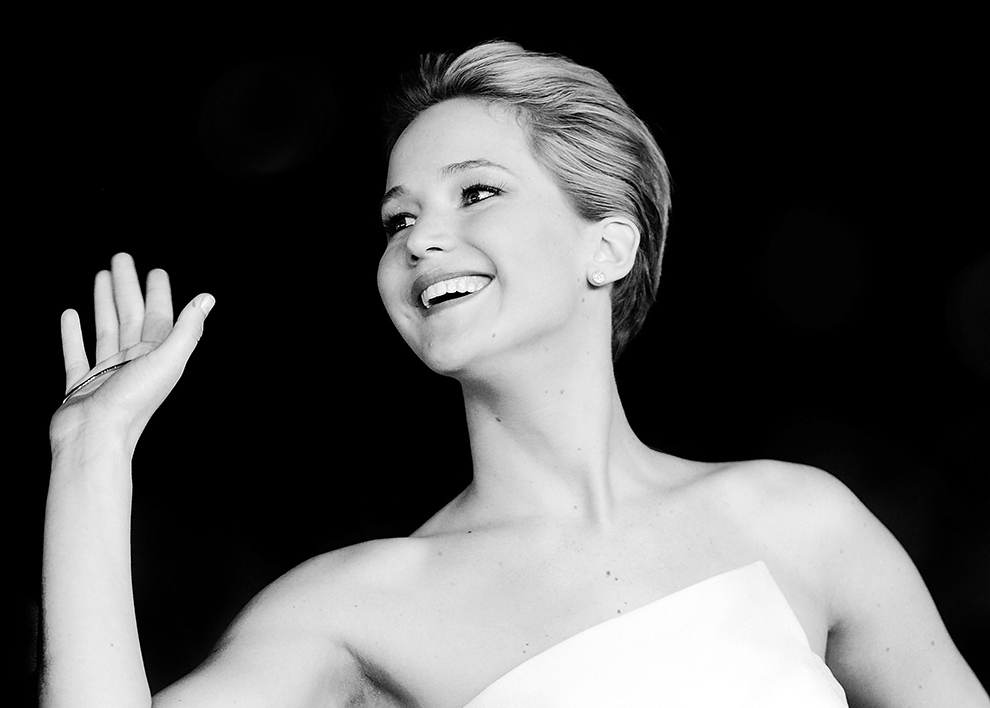
CORRECTION: Jennifer Lawrence told her amazing story of butt plugs to Conan O'Brien. An earlier version of this piece stated that it was David Letterman, who probably would have been considerably more embarrassed. (2/28/14)

